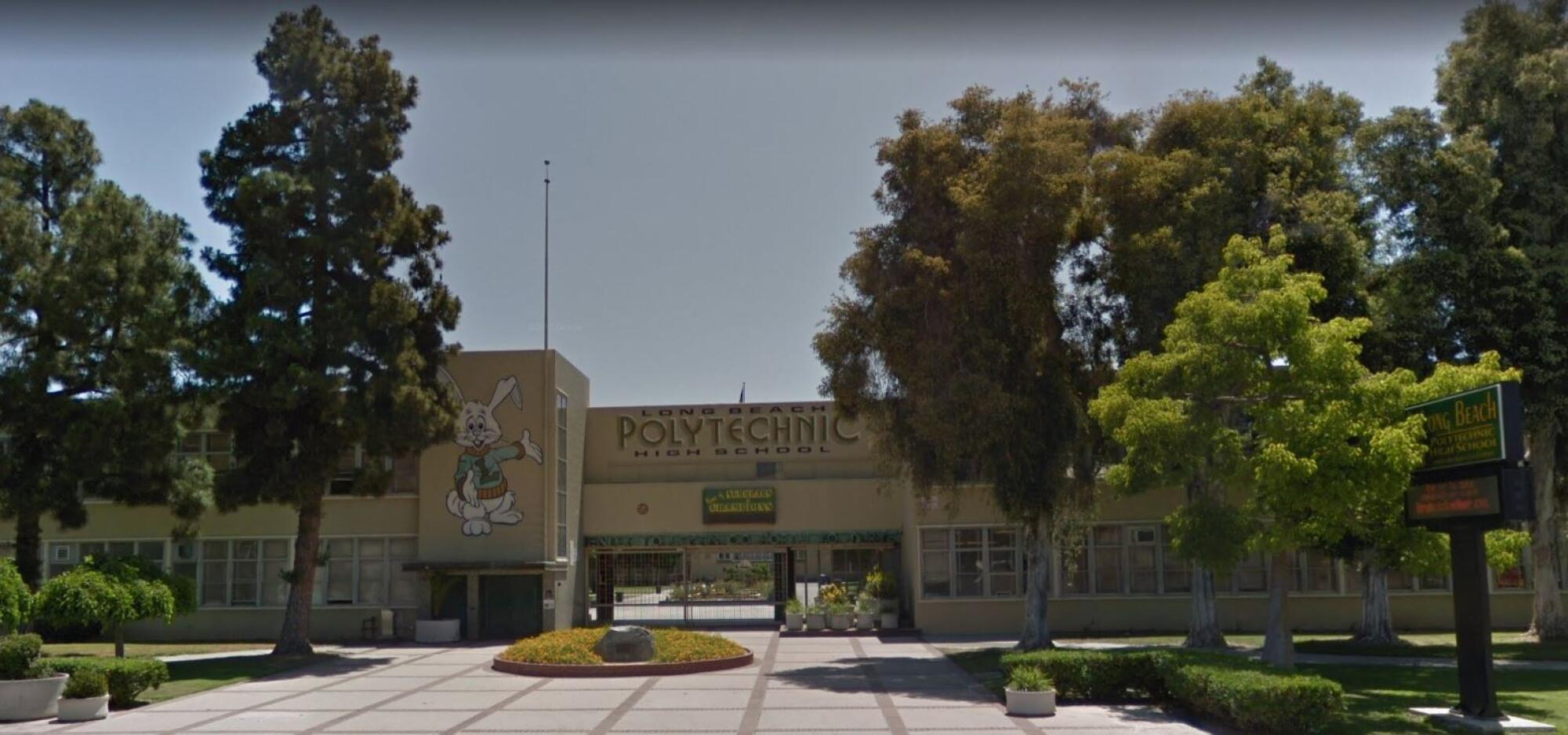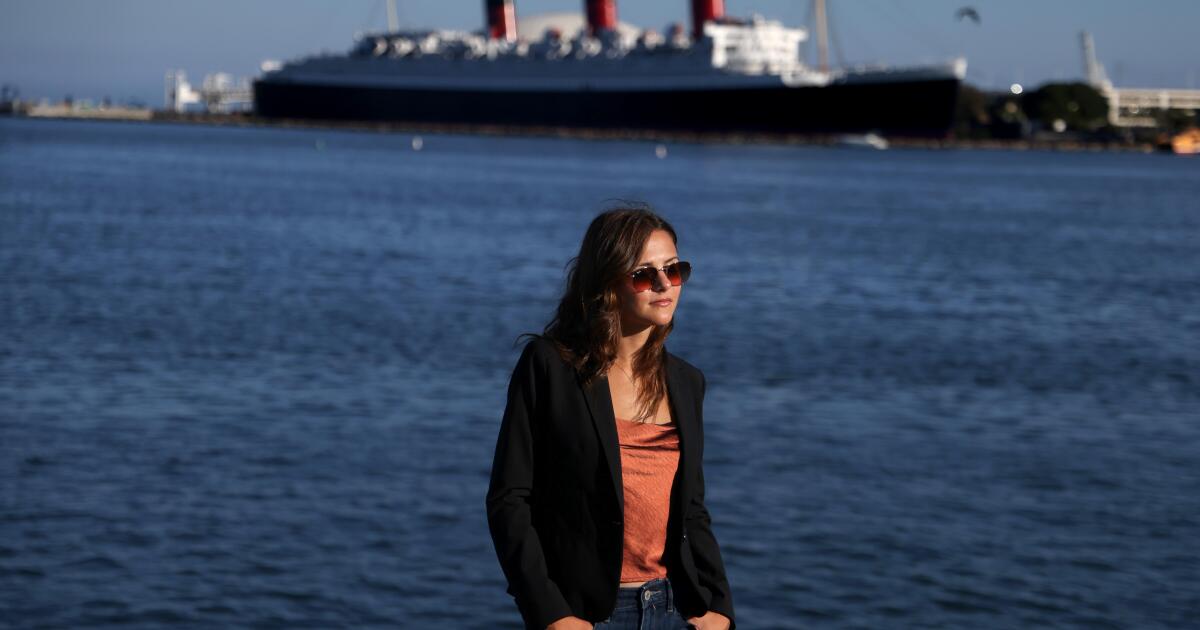It was August 2018 and California was amid one of its deadliest and most destructive wildfire seasons. I vividly remember walking home from school with my brother — who was only 6 at the time — and watching him point at the sky and ask, “Is that the moon?” Thanks to the wildfires, the sun was unrecognizable amid orange, apocalyptic skies.
The next year, as a freshman at Long Beach Polytechnic High School, I was enrolled in an environmental science class that helped me grasp just how serious the climate crisis is. The message was loud and clear: The world is dying and we have to act now to save it.
In the summer of 2020, I came across the Climate Reality Project, a nonprofit that’s involved in education and advocacy related to climate change and offers leadership training. After completing the weeklong program, I was connected to the local Climate Reality chapter and was introduced to the amazing individuals who helped push the Los Angeles Unified School District in 2019 to commit to 100% clean energy in the electricity sector by 2030 and in all other energy sectors by 2040.
Those people inspired me. If Los Angeles could do it, couldn’t the Long Beach Unified School District?
Leaders in L.A.’s Climate Reality Project mentored me, and I was able to find students and teachers at my high school — including Patrick Gillogly — and in the district, who shared a similar vision. In August 2020, as a sophomore, I founded the Long Beach Green Schools Campaign and recruited some of those like-minded students, who in turn, spread the word to other students at other schools in the district.
I was naive at first. I thought GSC would simply present the school district with a 100% clean energy resolution and the school board would vote yes and, boom, done. World saved. I was not expecting a two-year-plus process.

As a freshman at Long Beach Polytechnic High School, Michaelson discovered just how serious the climate crisis is. The message was loud and clear, she said: The world is dying and we have to act now to save it.
(Google)
The campaign had to prove to the district that the students involved in the movement weren’t just an angry, obnoxious group of teenagers. We had to earn the school board’s respect and demonstrate that we were willing to keep showing up.
Contrary to what some may believe, the campaign never faced direct opposition — we never encountered climate deniers. Everyone we spoke to believed in climate change and recognized the importance of transitioning to clean energy. The big hurdle was making it a top priority.
We had our first meeting with an LBUSD school board member, Megan Kerr (who was to later become one of the greatest supporters of the campaign), in December 2020, and she said that while she fully supported our goals, the resolution would not be passed for some time. The district was focused on the pandemic and distance learning.
That made complete sense — school districts, like all governing bodies, are constantly juggling priorities — but it was hard to hear. We wanted to see the board pass a clean energy resolution immediately. But there were benefits to waiting. In what my mom has often referred to as “a marathon, not a sprint,” the many months it took to pass this resolution allowed us to craft a feasible, realistic plan that put climate action at the forefront of LBUSD’s goals.
The Green Schools Campaign kicked things off with an online student-led Climate Town Hall, which attracted more than 75 attendees. We started a petition (that was signed by more than 1,000 residents) and continued to reach out to parents, students and teachers to discuss the campaign and its goals.
In September 2021, we organized an in-person climate rally that was attended by almost 200 people, including the actor and environmental activist Calum Worthy. The event included talks by energy experts, local politicians and environmental activists. The campaign was also able to bring in 70 different speakers to speak at every single biweekly school board meeting in favor of a transition to clean energy.
The second prong of the campaign involved working directly with the district. This involved regular meetings with facilities directors and a district-appointed representative to go over proposals, line by line. We also met regularly with school board members, the superintendent and other school officials to discuss how we could gain their support. We helped bring environmental experts into the discussion to help explore financial incentives and funding streams available to LBUSD to help transition to clean energy.
After two years of meetings and community engagement, the Green School Operations – Energy and Sustainability Policy was adopted on Aug. 17, 2022, committing the district to transition to 100% clean energy by 2045.
At this point, I have to point out that effective action means collaboration between those currently in charge and those who will be in power in the years to come — that is, my generation. Yelling at a school board to be greener without creating a feasible plan to do so will get you nowhere.
Nonrenewable energy has been the norm for so long that our systems are built around this technology, and, quite frankly, it’s easy to stay this way. That’s why it takes a village to decide to fight for these issues.
Diana Michaelson is a sophomore studying healthcare policy at Cornell University. She is excited to monitor the district’s compliance to the Energy and Sustainability Policy until the job is done.

